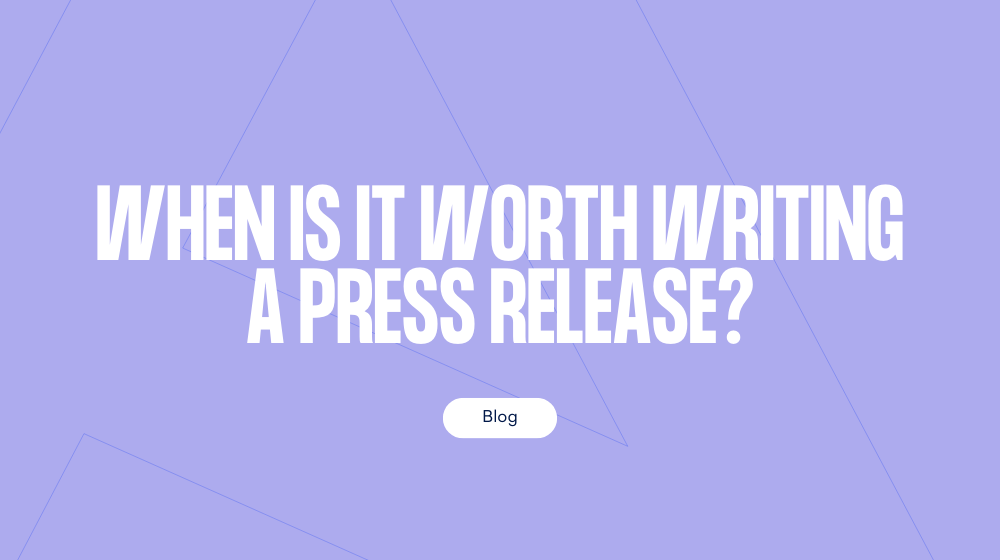When most people think of PR, the press release surely ranks as the tactic that most springs to mind. They’re a quick, effective way to get an announcement out to relevant media outlets.
Today though, it’s become so easy to create and distribute press releases using online tools that many journalists’ inboxes are saturated with releases that should never have been written. Conversely, lots of organisations still overlook things that would warrant a press release and don’t realise how simple and valuable they can be.
Generating publicity through press releases isn’t witchcraft. Yes, you need to invest a little time and know which announcements are right for which media outlets, but having a good understanding of when (and when not) to create a release ensures that any time you do invest, it gets results. There are some simple considerations to help you know when that will be.
News value
It may seem redundant to say that a press release needs news value to get coverage, but it’s surprising how many businesses will try and put out releases about non-stories. Something that is generating excitement internally may not do the same externally.
Generally speaking, unless your organisation is kind of a big deal, no-one wants to hear about your new junior employees, product or service refreshes and updated websites. Here’s a list of some things that do warrant coverage: innovative new products or services (with facts to back up your claims), notable new clients or partners, amazing results or really big achievements of one sort or other and original, insightful data from studies or surveys. You get the picture.
Ad value (or the lack thereof)
The point of press releases is, of course, to generate publicity. That doesn’t mean they’re a way to generate free advertising. Don’t confuse editorial with advertorial. If you’ve got a product or service that is genuinely newsworthy for some reason, then a press release will help you to secure coverage. If you simply write a release about some run-of-the-mill service and then fill it with unverified claims and hyperbole, you’re not getting that coverage. Rest assured, the journalist whose inbox it lands in will see right through it.
Timeliness
If you’ve got a story to tell, tell it straight away. As far as the media is concerned, old new is no news. Who cares if a business launched a new product, got great results or released a report two months ago? For journalists – today more than ever – the value is in what’s happening now and how many other outlets they can scoop. There are occasions when it’s not possible to announce something immediately – you might have an exclusivity agreement with a specific outlet or a partner company may need you to hold fire, for example. If there’s a good reason like this you’ll usually be ok, but if not then get your news out as soon as you can.
Supporting material
Journalists love facts and figures. They back up claims and colour in the ins-and-outs of a story. A press release without facts and figures can look weak at best and salesy at worst. If you want fast, thorough coverage, give media outlets the detail that they need to write it. The better the detail, the better the coverage.
The same goes for accompanying photos and videos - the better they are, the more coverage you'll get. Not only do news sites typically work to templates that need images to go with their articles, but photos and video improve a site's SEO. If you send a press release without photos at the very least, you're making someone source a stock photo for you and not helping them max their traffic. In short, that reduces the chance of your story getting featured. Send good photos and a decent video and your chances are improved.
Photo by Roman Kraft on Unsplash



